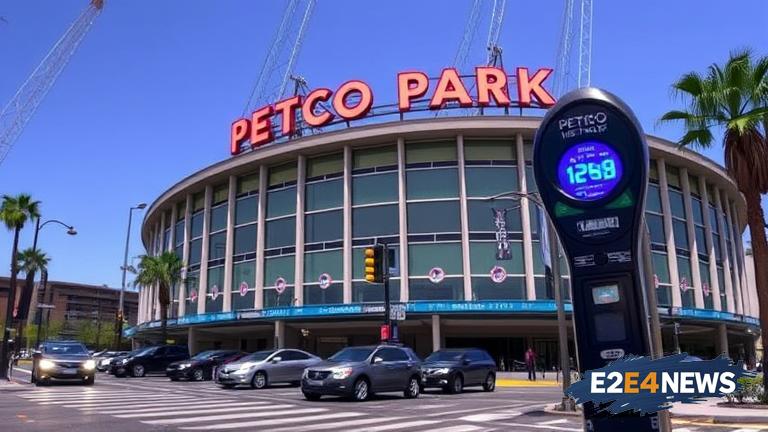The city of San Diego has implemented a significant increase in parking meter prices near Petco Park, the home stadium of the San Diego Padres. The new rates, which went into effect recently, have left many residents and visitors frustrated and searching for alternative parking options. The price hike is part of a larger effort by the city to manage parking demand and reduce congestion in the area. However, the increased rates have been met with criticism from some who argue that they will disproportionately affect low-income residents and small business owners. The new parking meter prices near Petco Park range from $2.50 to $5.00 per hour, depending on the location and time of day. This represents a significant increase from the previous rates, which were $1.50 to $3.00 per hour. The city has also introduced a new pay-by-phone parking system, which allows drivers to pay for parking using their mobile devices. While the new system is designed to make parking more convenient, some have expressed concerns about the potential for errors and disputes over parking fees. The increased parking meter prices near Petco Park are expected to generate significant revenue for the city, which will be used to fund various transportation and infrastructure projects. However, some have questioned whether the revenue will be used effectively and whether the increased rates will have a negative impact on local businesses. The city has argued that the increased rates are necessary to manage parking demand and reduce congestion in the area, but others have suggested that alternative solutions, such as increasing the availability of parking spaces or improving public transportation, could be more effective. The parking meter price increase near Petco Park is not an isolated incident, as the city has been increasing parking rates across various neighborhoods in recent years. This has led to concerns about the impact on low-income residents and small business owners, who may struggle to afford the increased rates. Some have also argued that the increased rates will drive visitors away from the area, which could have a negative impact on local businesses. On the other hand, the city has argued that the increased rates will help to reduce congestion and make the area more attractive to visitors. The debate over the parking meter price increase near Petco Park highlights the complex issues surrounding parking management in urban areas. As cities continue to grow and develop, they must balance the need to manage parking demand with the need to support local businesses and residents. The city of San Diego has committed to monitoring the impact of the increased parking meter prices and making adjustments as needed. However, the issue is likely to remain a topic of debate in the coming months and years. In addition to the parking meter price increase, the city has also implemented various other measures to manage parking demand near Petco Park. These include the introduction of parking permits for residents and the creation of a parking task force to study the issue and make recommendations. The city has also invested in improving public transportation in the area, including the expansion of bus and train services. While these efforts are designed to reduce congestion and make the area more accessible, some have argued that they do not go far enough. The parking meter price increase near Petco Park is a reminder that parking management is a complex and multifaceted issue that requires careful consideration and planning. As the city continues to grow and develop, it will be important to find solutions that balance the needs of residents, businesses, and visitors. The increased parking meter prices near Petco Park are a significant change that will have a major impact on the area. While the city has argued that the increased rates are necessary to manage parking demand, others have expressed concerns about the potential impact on local businesses and residents. The issue is likely to remain a topic of debate in the coming months and years, as the city continues to monitor the impact of the increased rates and make adjustments as needed.
